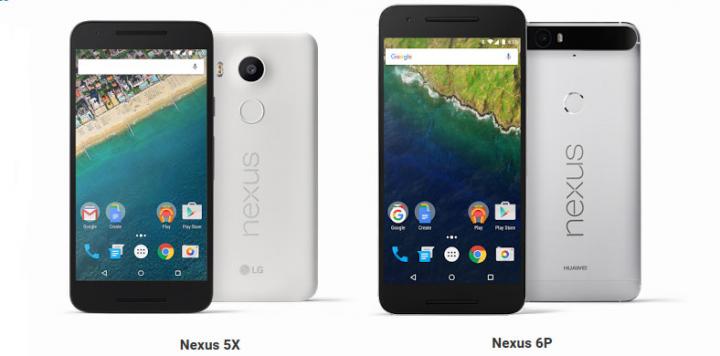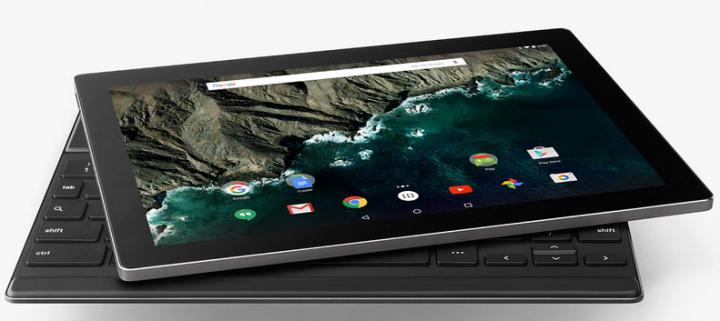You’re going to want Android 6.0 on your device. Android 6.0 codename Marshmallow brings with it crucial improvements and important new features that you’re going to love.
Keep reading to uncover what’s new in Android Marshmallow and to uncover some “must-know” facts about this mobile operating system.
1. The wait is over (almost…for Nexus customers)

You’ll get Android 6.0 Marshmallow on your Nexus device very, very soon. Google will start rolling it out to existing Nexus devices next week.
Starting with October 5, 2015, people who have a supported Nexus device will start getting Marshmallow. The list of supported Nexus devices includes the Nexus 5, Nexus 6, Nexus 7 (2013), Nexus 9, Nexus Player, and Android One.
The wait isn’t over if you have some other Android device and not a Nexus. High-end devices from well-known manufacturers like Samsung or HTC for example, will get to upgrade to Android 6.0, most likely early 2016. The aforementioned HTC for example has already confirmed that its HTC One M9, HTC One M9+ and HTC One M8 will be upgraded to Marshmallow.
So if you have a top shelf Android, you’ll have to wait until next year. What if you have a cheaper/older device, or a device made by a lesser-known manufacturer? Chances are you will not get an upgrade. Sorry!
2. Marshmallow is a major new release

With Marshmallow, Google takes Android from version 5.x to version 6.0. This means Marshmallow is a major new release that comes packed with useful new features and improvements. I don’t want to bore you with a long “what’s new” list like this one (PDF). I’m going to focus on the most important changes. Here goes.
USB Type-C cables are supported and you can charge other devices via USB.
Now on Tap makes Google Now smarter and more useful than ever. It lets Google Now crawl through your apps so that you can search for things from within an app. Say you’re chatting with a friend, talking about how you want to go to a certain restaurant. Now on Tap can bring up useful info about that restaurant without you having to leave your chat app.
Your phone’s battery will last longer because Marshmallow comes with Doze and App Standby. Doze detects when you’re not using your Android device and puts it into a sleep state; the background activity is reduced when the operating system detects that you’re not physically handling the device. App Standby limits the impact seldomly used apps have on battery life.
Marshmallow comes with a redesigned permissions model that lets you manage app permissions. With previous Android versions, you had no choice but to accept all the permissions an app asked for. With Marshmallow, you get to choose what apps can access. You can grant and block specific permissions. For example: if an app wants to access your contacts, your storage and your location, you can grant it permission to access the first two, but not the last one.
Marshmallow comes with native support for fingerprint recognition. You can use your fingerprint to unlock your phone, to sign into accounts, or to make purchases with Android Pay. Nexus Imprint is the official name Google selected for the fingerprint sensor that’s part of the new Nexus devices.
3. Meet the Marshmallow-powered Nexus 5X and Nexus 6P

Built in partnership with LG, the Nexus 5X smartphone promises to offer top-line performance in a compact, light package. It has a 5.2-inch FHD LCD screen, a Snapdragon 808 1.8 GHz hexa-core 64-bit processor, 2GB of RAM, a 12.3MP rear camera and a 5MP front camera, and a 2700mAH battery.
It is available for purchase on the Google Store, starting at $379.
Built in partnership with Huawei, the Nexus 6P is the first ever all-metal-body Nexus phone, crafted from aeronautical-grade aluminum. It has a 5.7-inch WQHD AMOLED display, a Snapdragon 810 2.0 GHz octo-core 64-bit processor, 3GB of RAM, a 12.3MP rear camera and an 8MP front camera, and a 3450mAH battery.
It is available for purchase on the Google Store, starting at $499.
4. Get Nexus Protect and don’t worry about damages

I’ve dropped plenty of phones in my life and I can tell you that it’s never fun. If I get a Nexus 5X or 6P, chances are I am going to drop it or damage it somehow. That makes me worry, and I don’t want to worry, I want a worry-free experience.
This is where Nexus Protect comes in. Similar to AppleCare, it is a premium warranty program meant for butter-fingered customers like myself.
Nexus phones come with a 1-year manufacturer’s warranty. Nexus Protect piles on an additional year of coverage for mechanical breakdown and 2 years of protection from accidental damage. What does that mean, in layman’s terms? It means that if your Nexus breaks or gets damaged, Google will repair it. And if it is broken or damaged beyond repair, you’ll get a replacement as early as the next business day.
5. Meet the Pixel C tablet

Meet Google’s answer to Apple’s iPad Pro and Microsoft’s Surface: the Pixel C. The interesting thing about this new device is that it is the first ever Android tablet built end-to-end by Google. Another interesting thing is that it runs Android 6.0 Marshmallow, not Chrome OS. To date, all of Google’s Pixel devices ran Chrome OS.
The Pixel C tablet comes with a full-size keyboard that attaches magnetically, sports a stunning aluminum design, has a 10.2-inch display, an Nvidia Tegra X1 quad-core processor, 3GB of RAM, and a USB Type-C port. Google says the Pixel C tablet will hit the Google Store in time for the winter holidays. Pricing starts at $499 for the tablet and $149 for the keyboard.

Did you know?
Android is used on watches, phones, tablets, TVs, and even cars. It’s used on around 1.4 billion devices around the world, according to Google CEO Sundar Pichai.
You’ve thought about it, you asked yourself the hard questions, and you’ve made up your mind – you’re going to get a new Android phone. You’ve just haven’t decided which one to pick, and with so many Android devices out there, you’re having a hard time making a choice. You need to know about Google’s Which Phone Tool. Visit the Which Phone website, answer a few questions, and you’ll be presented with a list of suggestions.
The two new Nexus phones are the Nexus 5X, built in partnership with LG, and the Nexus 6P, built in partnership with Huawei. Did you know that the X in Nexus 5X stands for NeXus while the P in Nexus 6P stands for Premium?
Keep reading to uncover what’s new in Android Marshmallow and to uncover some “must-know” facts about this mobile operating system.
1. The wait is over (almost…for Nexus customers)

You’ll get Android 6.0 Marshmallow on your Nexus device very, very soon. Google will start rolling it out to existing Nexus devices next week.
Starting with October 5, 2015, people who have a supported Nexus device will start getting Marshmallow. The list of supported Nexus devices includes the Nexus 5, Nexus 6, Nexus 7 (2013), Nexus 9, Nexus Player, and Android One.
The wait isn’t over if you have some other Android device and not a Nexus. High-end devices from well-known manufacturers like Samsung or HTC for example, will get to upgrade to Android 6.0, most likely early 2016. The aforementioned HTC for example has already confirmed that its HTC One M9, HTC One M9+ and HTC One M8 will be upgraded to Marshmallow.
So if you have a top shelf Android, you’ll have to wait until next year. What if you have a cheaper/older device, or a device made by a lesser-known manufacturer? Chances are you will not get an upgrade. Sorry!
2. Marshmallow is a major new release

With Marshmallow, Google takes Android from version 5.x to version 6.0. This means Marshmallow is a major new release that comes packed with useful new features and improvements. I don’t want to bore you with a long “what’s new” list like this one (PDF). I’m going to focus on the most important changes. Here goes.
USB Type-C cables are supported and you can charge other devices via USB.
Now on Tap makes Google Now smarter and more useful than ever. It lets Google Now crawl through your apps so that you can search for things from within an app. Say you’re chatting with a friend, talking about how you want to go to a certain restaurant. Now on Tap can bring up useful info about that restaurant without you having to leave your chat app.
Your phone’s battery will last longer because Marshmallow comes with Doze and App Standby. Doze detects when you’re not using your Android device and puts it into a sleep state; the background activity is reduced when the operating system detects that you’re not physically handling the device. App Standby limits the impact seldomly used apps have on battery life.
Marshmallow comes with a redesigned permissions model that lets you manage app permissions. With previous Android versions, you had no choice but to accept all the permissions an app asked for. With Marshmallow, you get to choose what apps can access. You can grant and block specific permissions. For example: if an app wants to access your contacts, your storage and your location, you can grant it permission to access the first two, but not the last one.
Marshmallow comes with native support for fingerprint recognition. You can use your fingerprint to unlock your phone, to sign into accounts, or to make purchases with Android Pay. Nexus Imprint is the official name Google selected for the fingerprint sensor that’s part of the new Nexus devices.
3. Meet the Marshmallow-powered Nexus 5X and Nexus 6P

Built in partnership with LG, the Nexus 5X smartphone promises to offer top-line performance in a compact, light package. It has a 5.2-inch FHD LCD screen, a Snapdragon 808 1.8 GHz hexa-core 64-bit processor, 2GB of RAM, a 12.3MP rear camera and a 5MP front camera, and a 2700mAH battery.
It is available for purchase on the Google Store, starting at $379.
Built in partnership with Huawei, the Nexus 6P is the first ever all-metal-body Nexus phone, crafted from aeronautical-grade aluminum. It has a 5.7-inch WQHD AMOLED display, a Snapdragon 810 2.0 GHz octo-core 64-bit processor, 3GB of RAM, a 12.3MP rear camera and an 8MP front camera, and a 3450mAH battery.
It is available for purchase on the Google Store, starting at $499.
4. Get Nexus Protect and don’t worry about damages

I’ve dropped plenty of phones in my life and I can tell you that it’s never fun. If I get a Nexus 5X or 6P, chances are I am going to drop it or damage it somehow. That makes me worry, and I don’t want to worry, I want a worry-free experience.
This is where Nexus Protect comes in. Similar to AppleCare, it is a premium warranty program meant for butter-fingered customers like myself.
Nexus phones come with a 1-year manufacturer’s warranty. Nexus Protect piles on an additional year of coverage for mechanical breakdown and 2 years of protection from accidental damage. What does that mean, in layman’s terms? It means that if your Nexus breaks or gets damaged, Google will repair it. And if it is broken or damaged beyond repair, you’ll get a replacement as early as the next business day.
5. Meet the Pixel C tablet
Meet Google’s answer to Apple’s iPad Pro and Microsoft’s Surface: the Pixel C. The interesting thing about this new device is that it is the first ever Android tablet built end-to-end by Google. Another interesting thing is that it runs Android 6.0 Marshmallow, not Chrome OS. To date, all of Google’s Pixel devices ran Chrome OS.
The Pixel C tablet comes with a full-size keyboard that attaches magnetically, sports a stunning aluminum design, has a 10.2-inch display, an Nvidia Tegra X1 quad-core processor, 3GB of RAM, and a USB Type-C port. Google says the Pixel C tablet will hit the Google Store in time for the winter holidays. Pricing starts at $499 for the tablet and $149 for the keyboard.
Did you know?
Android is used on watches, phones, tablets, TVs, and even cars. It’s used on around 1.4 billion devices around the world, according to Google CEO Sundar Pichai.
You’ve thought about it, you asked yourself the hard questions, and you’ve made up your mind – you’re going to get a new Android phone. You’ve just haven’t decided which one to pick, and with so many Android devices out there, you’re having a hard time making a choice. You need to know about Google’s Which Phone Tool. Visit the Which Phone website, answer a few questions, and you’ll be presented with a list of suggestions.
The two new Nexus phones are the Nexus 5X, built in partnership with LG, and the Nexus 6P, built in partnership with Huawei. Did you know that the X in Nexus 5X stands for NeXus while the P in Nexus 6P stands for Premium?

























